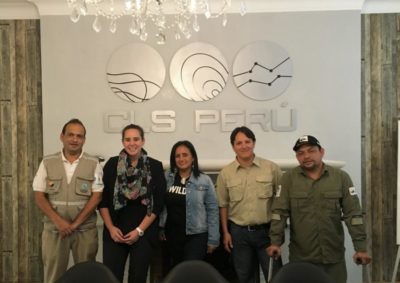By Silvia Sanchez Bor, May 26, 2016
The Peruvian Coast Guard protects Peru’s marine natural resources, including three marine protected areas that together cover 2,400 square miles, as well as giant oceanic mantas, a species it shares with coastal Ecuador that were recently protected in Peru.
WildAid’s marine team works with the Ecuadorian Navy and Galapagos National Park Service to monitor the vast Galapagos Marine Reserve and prevent illegal fishing, including unsustainable practices that threaten mantas, sharks, sea turtles and dolphins that get caught on fishing lines as bycatch or are illegally targeted for the lucrative illegal wildlife trade.
This year, we will install electronic monitoring software (AIS) to track small fishing vessels throughout the reserve, including in the new marine sanctuary at Darwin and Wolf. This new technology will complement existing technology (VMS) that tracks commercial fishing and tourism vessels within the reserve. Together, the two systems will allow park rangers to monitor nearly 100% of the 50,000-square-mile reserve.
Electronic surveillance technology has helped park rangers capture and sentence more than 100 industrial and small fishing vessels, such as the Maria Tatiana IV that was caught with 80 illegally caught sharks in its hold last month.
In this peer exchange the Peruvian Coastguard will demonstrate how their control center combines data using those same two systems (AIS and VMS) to monitor suspicious activity within their waters. This collaboration may also aid environmental officials from both countries in better protecting shared migratory species, such as giant mantas, sharks, humpback whales and sea turtles.
Thanks to the support of the Helmsley Charitable Trust, WildAid and CLS coordinated this exchange to train Galapagos park rangers on the use of the new technology and to develop best practices to improve enforcement of the reserve.
